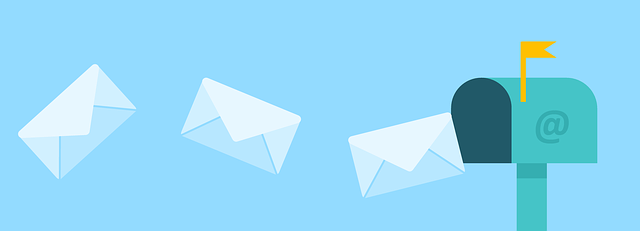
I’m about to hand down a little harsh truth to you. When you first read it, it will not make sense. If you manage an email list, this truth might even irk you.
It’s okay. Go with it for a second.
Ready? Here it is: The size of your email list doesn’t matter as much as you think it does.
Before you click away in disgust, let me throw some math in here to show you what I mean.
Size vs. Engagement
Let’s say you sell a product worth $100/year (because hypothetical math should always be easy). You manage an email list of about 2,000 names signed up through a rather generic but somewhat-effective Facebook ad.
You send them emails every once in a while when you’re running another launch for your product and you want to highlight what they get.
Using this strategy, you achieve a conversion rate of about 0.5% - low, but common. That means you’ve converted 10 subscribers to customers, generating about $1,000/year in gross revenues.
That’s not enough, so you take that money and pour it back into Facebook ads, building up your list so that you can get more customers. As your list grows, so do your costs, and you follow a never-ending cycle that leads to nowhere, and you shut your business down a year later because of overwhelming costs and little-to-no profit.
Now, let’s assume you only have 25 names on your email list.
They’re all names that have interacted with you in the past. Maybe they’ve received a free consultation or a sample of a product of yours. You email them every single week discussing industry news, sharing behind-the-scenes stories, and asking questions. You reply to every response you get from them.
Because these names feel a personal connection to you and your brand, they are ready to buy whenever you launch. When you open up your product for sale at $100/year, a full 20 people buy.
That’s $2,000/year. Still not world-beating, but you’ve doubled your revenue, your costs are way down, and you can invest confidently in your business, thriving year over year.
This is not as hypothetical as you might think
Sure, I made up these numbers on the fly, but I know plenty of people with tiny lists making plenty of full-time money, and I know companies with massive lists who can’t make ends meet.
Why? Because the smart marketers know that the key to generating a steady stream of revenue from your email list isn’t list size, it’s list engagement.
If you can increase your list engagement, everything about your business gets stronger. You are much less stressed, you get results whenever you need them, and you don’t have to obsess over building your list at such a rapid pace.
Rookies measure list size. The pros watch list engagement.
Now, this varies by industry, but on average, your open rate should be around 15%-25%, and your click rate should be about 2.5%.
If your numbers aren’t anywhere near there, you have some work to do. But where do you start? You could do a dozen things wrong.
True. But first, you want to shore up the things that are hurting your engagement rates the most. And in my experience, there are 5 of them that can improve your engagement rates overnight.
5 Mistakes that Cripple Engagement Rates

Mistake #1: You’re only emailing your list when you’re selling something
Any marketer with a shred of credibility to his or her name who claims that “email is dead” is making this mistake. I guarantee it.
See, there was a time when all you needed to do was send out a coupon or an ad for your upcoming sale, and you could rake in the business. Those days are gone.
Your potential customer opens their inbox to see a few emails from brands like yours, a new recipe from that cooking blog they subscribe to, an update from their kid’s schoolteacher, a forward from their father, and various work-related emails.
There’s a lot of “noise”. And when there’s too much noise to deal with, the first thing to go is anything that looks like an advertisement.
If you’re only emailing your list when you have something to sell, not only are you making it easy for them to ignore you, you’re also training them to ignore you.
"Oh, it’s another email from XYZ Brand hyping their weekend sale. Delete."
They’re not interested in hearing what you have to say because you’ve already clarified that you have nothing to say.
The solution: Be informative. Be entertaining. Show a photo or tell a story from behind-the-scenes. Don’t tie it to any sale or course of action. Just send them something that they might be interested in reading. Start training your audience to see your emails as something that they would want to see, instead of something that gets in their way.
Mistake #2: You’re emailing too little
This is another uncomfortable truth.
As a self-published author, I used to email my audience list of about 1,000 names whenever I had a new book out for sale. My engagement rates hovered around 20% or so, and my sales were very, very flat.
One day, I started emailing every week, without fail. It didn’t matter that I had nothing to sell. I started telling stories about what was going on in my life. One of my most-engaged-with emails was all about how I injured my wrist down in my basement wood shop.
Thanks to emailing weekly, my engagement rates now average over 40%. I’ve received emails from readers thanking me for telling them stories, because it allows them to connect with me as a person and not just a brand.
If you are a personal brand, this tip is even more important. But brands of any size should email regularly. It gives you an opportunity to strengthen the bond with your audience and keep your brand at the top of their minds.
The solution: You already know – email more! Stop trying to sell and engage instead. Make engagement the number one purpose of each email, and sales should pick up quickly.
Mistake #3: You’re not storytelling
Anyone can write an email. But not everyone can write a good email.
This is the toughest of the mistakes to correct because you might not be all that good at storytelling. Correcting this could mean hiring a copywriter (or using an app that improves your writing – like ProWritingAid, for example!).
But you can fix this right now without hiring anybody. Think of writing an email like talking to someone at a party (yes, that cliché still holds up).
When you write an email (or tell a story at a party), you keep the audience’s attention with the basic components of a story: character, plot, and purpose. Talk about something that happened to you or a team member this week. Share a story that you came across online. Tell something from your childhood.
The key is to tie the story to the purpose of your email – what image do you want them to have of your brand? How can you tell a story that conveys that image?
You can even position the reader be the main character in the story, if you can tell a hypothetical one. Find ways to allow the reader to imagine himself or herself in the story and you have a recipe for high engagement.
(And engaging stories use active voice. That means the subject of the story is doing things, not letting things be done to them. Not sure how to do it? Just write your story and run it through ProWritingAid and let the Style Report show you how it’s done!)
The solution: Position your target audience as the subject of the story, and tie its plot and purpose to the ideal image of your brand.
Mistake #4: You’re not paying attention to engagement rates
You can’t improve what you aren’t measuring.
If you want to lose weight, you watch the scale or the measuring tape. If you want to run farther, you track your mileage. If you want to make more money, you track sales.
This is a quick tip, but such an important one. If you don’t know your engagement rates, you’re doing it wrong. Every email service out there today measures engagement. Take advantage of it.
The solution: Try new things. Send different kinds of emails. The more you try to experiment, the more you’ll learn and the better your emails will be – and the higher your engagement rate will climb.

Mistake #5: You take the subject line for granted
A reader can’t engage with an email they don’t see. They can’t see the email if they don’t open it. And if your subject line doesn’t entice them to open it, you won’t get any engagement at all.
Don’t just say what the email is about. Subject lines should never be in all caps. Typos are unforgivable. And they need to be short and punchy – don’t write a subject line that will run out of space.
If you put a subject line in the box only because you need to before you can send it, then no wonder your engagement rates are suffering! The email subject line has a specific job: give the reader no choice but to click.
Many providers allow split-testing, so you can write multiple subject lines and track which ones perform better. This is a great way of measuring what kinds of subject lines your audience responds well to – so you can keep changing your strategy as you go.
The solution: Tease your readers. Post something that will arouse curiosity. Urgency is always great. Take advantage of the personalization features of your email provider. Even asking a simple question is a great way to get their attention.
This Won’t Happen Overnight
A lot of these tips involve a complete shift in how you manage your email marketing strategy. You need to re-train your audience to your new methods.
It will take time. You’ll lose some people. That’s okay. You don’t want anyone on your list that doesn’t want to be there, anyway. Remember what we talked about in the beginning of this post: engagement is more important than list size. Let them go.
In time – and it may be sooner than you think – you’ll start seeing your average engagement rates go up. Your sales and launches will perform better, and you’ll have a healthier, happier list. And that leads to a healthier, happier business.

